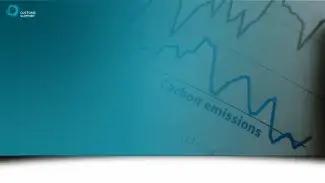Not knowing your obligations
No matter how much you keep an eye on news or want to be prepared, sometimes you aren’t ready when the time comes. We found that many traders (but not all) knew about the Carbon Border Adjustment Mechanism, but hadn’t realised the amount of work involved and had left it very late to start.
How to avoid it
One question we had a lot was “Am I responsible for CBAM reports?”.
Just to clarify this, if you are the importer of record, on the import clearance for the border movement, you are the one who has the CBAM obligations. Any further inland procedures or sales do not affect this.
We are hoping that this is just a teething problem for the industry now that the mechanism is in motion and traders have more clarity on who is responsible for CBAM.
If you are the party who is CBAM-obligated and are insure on what that means, Customs Support has several articles which can help you with this:
- An overview of the Carbon Border Adjustment Mechanism
- An overview of CBAM reports
- How classification affects CBAM
- Preparing for the Carbon Border Adjustment Mechanism
And, our customs consultants are here to help you with any CBAM compliance questions you have.
Not being able to gather shipment data effectively
Unfortunately, there isn’t a system at customs that provides details for all of your CBAM-classified goods at once – despite a CBAM clause appearing on your import clearance if it applies.
This means that you are reliant on knowing which shipments need to be counted, and having a system in place to collate that data.
This is a struggle when you are importing a variety of products, use many different forwarding or customs partners, or have a high volume of declarations to check manually.
How to avoid it
Register your products and shipments correctly inside your ERP system, or work with your customs partner to ensure that you can get the data you need in a useable format.
For all of our customers, regardless of whether they need CBAM reports or not, we are able to run reports for all of their shipments with us across Europe. Having this kind of data on hand saves valuable time and reduces the risk of inaccuracies from manual calculation.
Not knowing how to gather emissions data
Even after collating the shipment data, you may have been confused about how to calculate emissions. This is important because your future CBAM credits will be purchased to offset the values given here.
Default values were given for all CBAM products so that they could be used against the quantity imported. However, these are only accepted until the report in July, and will not be a permanent feature of CBAM reporting.
How to fix it
It is very difficult to ascertain embedded carbon during the import process. Therefore, this must be done beforehand. We recommend you:
- Work with your suppliers and guide them on what information you need from them.
- Involve your procurement and purchasing departments in discussions on CBAM, ensuring that they know the requirements that suppliers must meet and have these requirements written inside the contracts.
- Double check your customs tariff codes with goods classification experts as mistakes can cause hours of work and serious costs.
As hard as it is, you may need to switch suppliers until you cannot get yours to conform to the requirements. The CBAM initiative is designed to bring emissions into focus and create change, so these situations are expected in the short term.
Need advice on CBAM?
Customs Support is here to help you. With over 100 offices throughout the EU and UK, we can provide comprehensive advice on CBAM reporting and clearance solutions for all your shipments throughout Europe.
From the initial declaration to reporting, we’ll help you avoid clearance and CBAM errors so that you can trade with confidence in your compliance. Contact us for more information.














